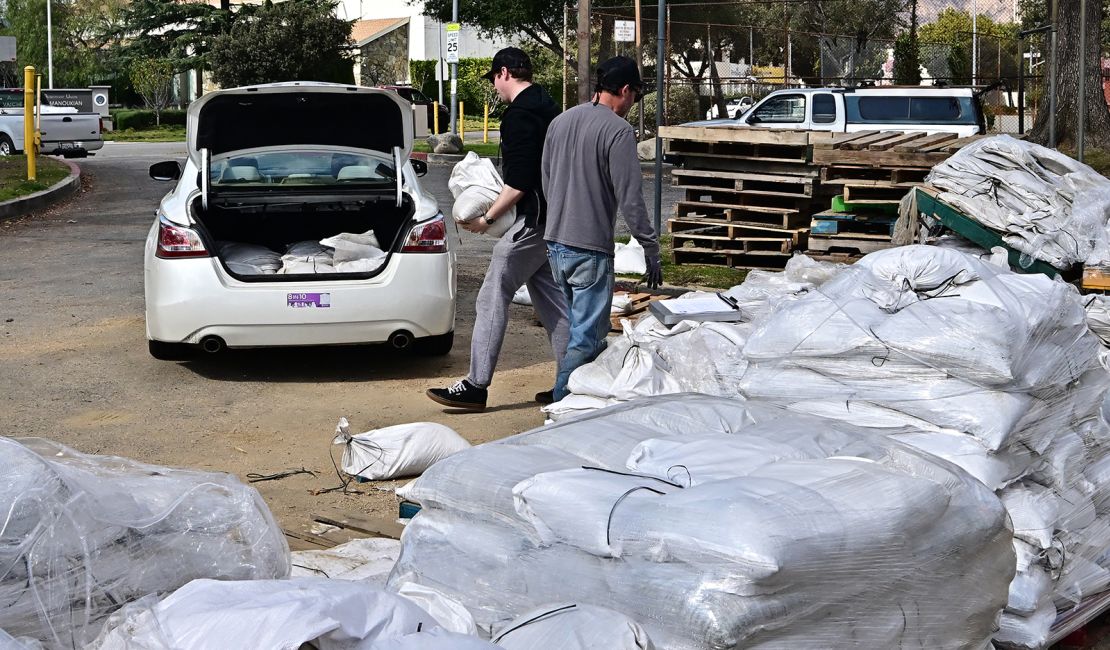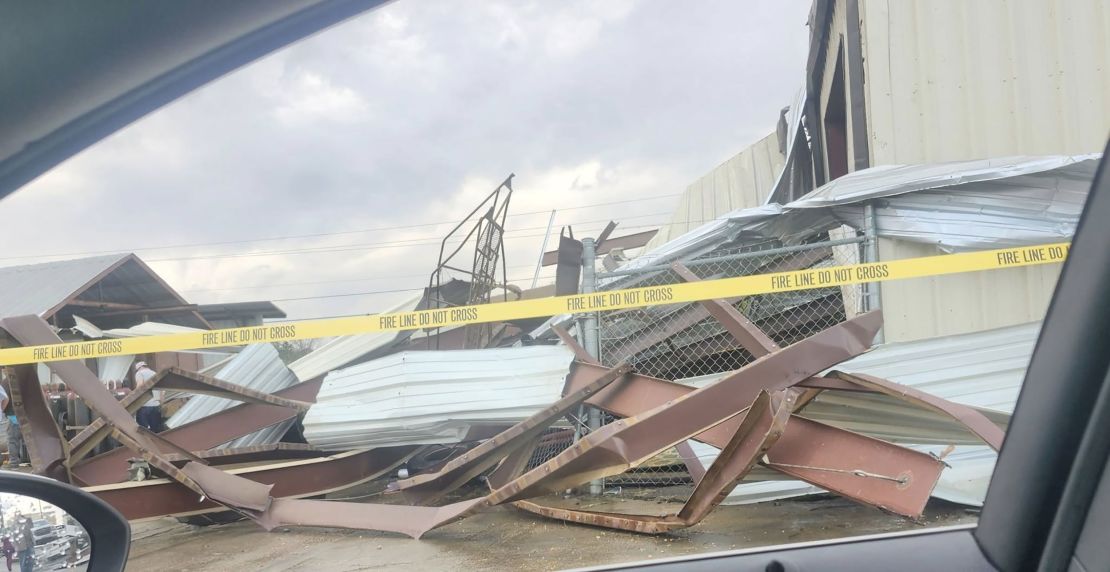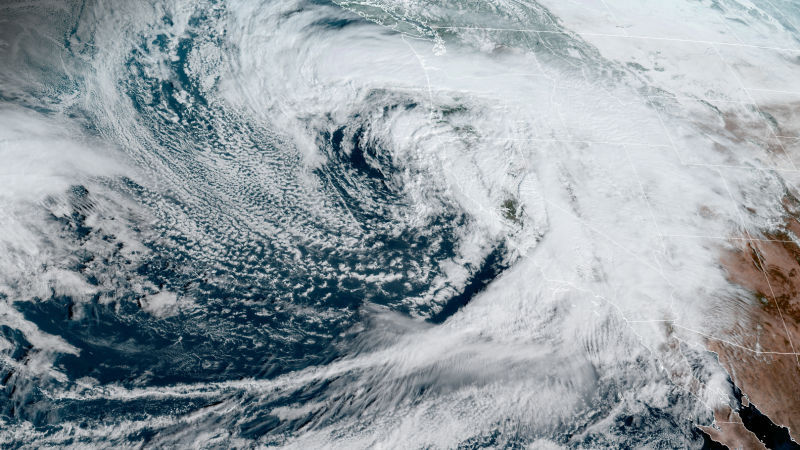CNN
—
Southern Californians evacuated their homes for the second time this year, but this time, it’s for heavy rain and debris flows that threaten new destruction in areas still recovering from last month’s devastating wildfires.
The strongest storm to impact parts of California in over a year has arrived and was drenching hundreds of miles of the state Thursday. Coastal areas and valleys in Southern California – including the Los Angeles basin – will see up to 3 inches of rain through Friday, according to the National Weather Service, with mountainous areas facing up to 6 inches.
Heavy rain reached parts of Los Angeles County late in the morning before expanding in scope and intensity through the evening. The heaviest rain subsided by Thursday evening but the danger of mudslides still remains. Both the Eaton and Palisades fire burn scars received rainfall rates of 0.5 inches to 1 inch per hour — a rate that can trigger debris flows.
Here’s the latest:
• Heavy rain drenches California: A powerful, atmospheric river-fueled storm is dumping rain over the state Thursday. Flood alerts stretch from north of the San Francisco Bay Area through coastal portions of Los Angeles County.
• Evacuations in multiple counties: Evacuation warnings or orders are in effect for communities near fire-scarred areas in Southern California most at risk of debris flows and mudslides. Portions of San Bernardino, Orange, Ventura and Los Angeles counties — including Malibu — are under these alerts. Evacuation orders put in place Thursday morning in low-lying areas for the risk of flooding along the San Lorenzo River in Santa Cruz County were lifted by the afternoon, along with Santa Barbara’s evacuation alerts for the Lake Fire burn area.
• Flood risk extends beyond burn scars: Flood alerts cover a large portion of California Thursday as heavy rain falls. Torrential rainfall could quickly cause flash flooding of roads, especially in urban or poor-drainage areas anywhere from Northern California to Southern California Thursday. Numerous rock and mudslides were reported Thursday by law enforcement in the Malibu area and the Santa Cruz Mountains, south of San Francisco.

Officials have been racing this week to shore up places at risk. Preparations in Los Angeles County include cleaning debris basins, installing concrete barriers and placing sandbags in fire zones to protect storm drains and filter debris. Search-and-rescue teams, deputies and helicopters are on standby to respond if needed.
A stretch of the Pacific Coast Highway between Pacific Palisades and Malibu was fully closed on Thursday until 6 a.m. PT Friday due to mudslide and flood warnings, according to the California Department of Transportation.
“Only Emergency Responders may access PCH until further notice due to a HARD CLOSURE of the route,” the agency said on X.
In Malibu, a Los Angeles Fire Department member sustained minor injuries after his vehicle was swept into the ocean by a large debris flow, LAFD spokesperson Erik Scott said on social media.
The incident occurred shortly after 5 p.m. Thursday along Big Rock Road, located off the Pacific Coast Highway. The member managed to escape and was transported to a hospital as a precaution, Scott said.
CNN crews on the ground saw tractors cleaning up the highway while putting in place fresh barricades to keep vehicles out.
“I never dreamt in my whole life I would see such utter complete devastation,” John Carr, a Pacific Palisades resident told CNN affiliate KCBS/KCAL, standing outside his home, where sandbags line the driveway.
Like many of his neighbors, Carr has done what he can — clearing debris from gutters and fortifying his property. Still, with fire-scorched hillsides stripped of vegetation, the danger of mudslides and debris flows loom large. “A lot of the houses without vegetation around them, burned off, could slide down the hill very easily,” he said.

The California Conservation Corps has deployed erosion control measures, such as sock wattles, to trap ash and debris before they contaminate waterways.
“For weeks, we’ve been worried about the possibility of having rain on a fire-impacted area,” Col. Eric Swenson of the Army Corps of Engineers told CNN.
The threat is particularly acute in communities like Altadena and the Palisades, where homes sit precariously on steep slopes. “The biggest concern when you have rain on a fire-impacted area is that the soil can become unstable,” Swenson said. “If you get enough water fast enough, you can cause a separation which causes the slide.”
Operations may be suspended if conditions become unsafe. “If the rain is so bad that we can’t see (or) operate safely, and it endangers our crews, then we’re not going to work,” Swenson said. In the event of a mudslide, California’s rapid-response system — coordinated by state and local agencies — will be activated to protect affected areas.
The devastation from recent wildfires has been particularly severe, with entire neighborhoods reduced to ash. “What makes this fire even worse is just the scope and scale of it,” Swenson said. “The sheer number of homes that were lost, plus the homes left standing within this field of debris, raises concerns for those residents who either have to or want to reoccupy their homes.”
Robert Fenton, the FEMA Region 9 administrator, told CNN the challenges of debris removal in fire-damaged areas as a storm looms. “We actually use wet methods to keep down the dust, so we’re constantly wetting it down,” Fenton said.
“The last time we’ve really seen this at somewhat of this scale is 2017, fires in Santa Rosa. This is at a much greater scale with much more destruction to properties,” Fenton said.
California’s wildfire insurance system is also buckling under mounting pressure. The state Insurance Department announced Tuesday that California’s program providing insurance to high-risk property owners needs an additional $1 billion to cover claims from January’s wildfires, according to the Associated Press. The Eaton and Palisades Fires, which destroyed nearly 17,000 structures, are expected to cost the plan $4 billion.
Meanwhile, private insurers like Allstate have scaled back coverage in California, citing wildfire risks.
West Coast storminess comes as parts of the eastern US are dealing with the aftermath of back-to-back winter storms this week that also unleashed damaging severe weather on the South Wednesday.
At least four tornadoes impacted Mississippi and Alabama. Survey teams will be sent to determine if other tornadoes hit the region.
About 20 homes and half a dozen businesses were damaged in Columbia, Mississippi, when severe thunderstorms whipped up a possible tornado Wednesday night, the mayor told CNN affiliate WDAM.

“We’re very fortunate, actually,” Mayor Justin McKenzie said. “It didn’t appear to be a big tornado. We could see it from City Hall and downtown. We’re just blessed we didn’t have any injuries or anything.”
Several roads were temporarily closed and crews worked to quickly restore electricity, McKenzie told WDAM.
“Everything that’s been damaged can be rebuilt,” McKenzie said. “I just can’t commend all the guys that responded enough. They did a phenomenal job.”
The cold side of the winter storms dropped snow and ice over a vast stretch of the central and eastern US. Virginia took the brunt of it. More than a foot of snow and damaging ice impacted the state, cut power and made travel dangerous.
More than 100,000 homes and businesses were still without power in Virginia as of Thursday night, according to PowerOutage.US.
Some customers may not have their electricity restored until late Sunday, according to area power utility Appalachian Power.
Winter weather also had a role in more than 300 vehicle crashes in Virginia, according to state police.
More than 200 crashes also occurred in neighboring Maryland, according to state police.
A driver died in a head-on crash on a snowy road on Tuesday in Nelson County, Kentucky, south of Louisville. The driver died at the scene after losing control going around a curve and hitting an oncoming semi truck head on. The incident is still under investigation, but Kentucky State Police said speed was the main contributing factor.
Another person was killed Wednesday morning in a rollover crash in wintry weather on an exit ramp in Callaway County, Missouri, according to the Missouri State Highway Patrol. The victim was a young child and was pronounced deceased at the scene, the city of Holts Summit said in a statement.
CNN’s Rebekah Riess, Lauren Mascarenhas, Kelly McCleary, Taylor Ward, Christine Sever, Amanda Musa, Isaac Yee and Taylor Romine contributed to this report.
